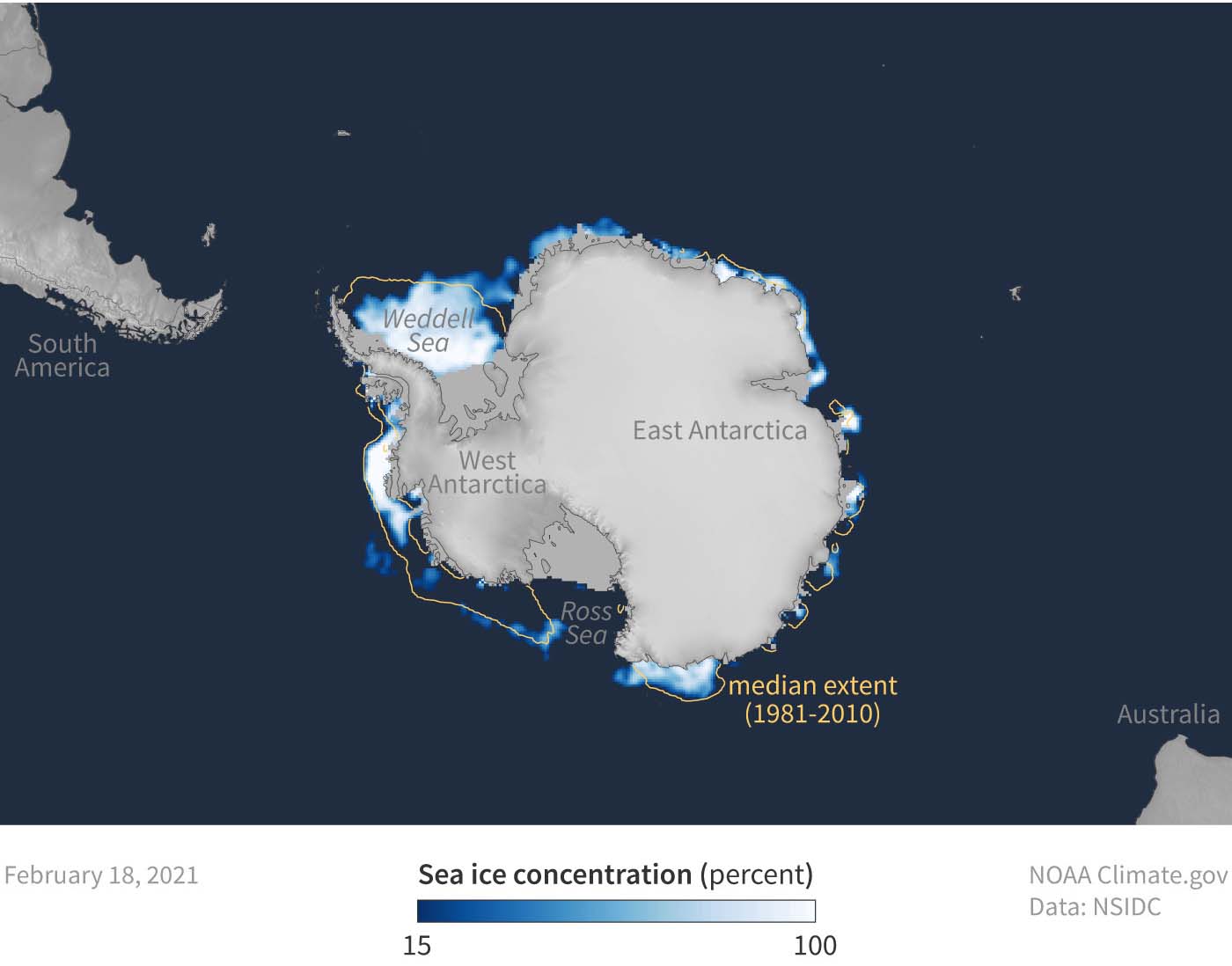Driven by global warming, sea level is rising. The extent of sea-level rise depends on how fast glaciers and ice sheets melt. According to the U.S. Interagency Sea Level Rise Taskforce, by the year 2100, global sea level will likely increase by at least 0.3 meters (12 inches) above the level measured in the year 2000, and total sea level rise could be as much as 2.5 meters (8.2 feet) above the level measured in the year 2000. The Antarctic and Greenland ice sheets contain the bulk of ice that could potentially melt and enter the ocean. If, for example, the entire Antarctic ice sheet were to melt, sea level would rise by about 60 meters (200 feet), according to U.S. National Snow and Ice Data Center models. See also: Antarctica; Climate modeling; Glaciology; Global warming; Greenhouse effect; Ocean; Ocean warming; Sea-level rise

Those models may need updating, however. Climate researchers from Utrecht University in the Netherlands have constructed a new, higher-resolution climate model to simulate future sea-level rise. Reporting in the journal Science Advances (April 2021), the researchers found that, compared to lower-resolution climate models, their new model predicted a slower increase in ocean temperatures around Antarctica. As a result, sea-level rise in 100 years could be about 25 percent lower than previous simulations predicted. See also: Climate modeling
Why is there such a large difference between the predictions made based upon the older and newer models? The new, high-resolution model includes a type of ocean current not found in earlier models called eddies—circular, whirlpool-like currents of water that are 10 to 200 kilometers (6 to 120 miles) in diameter. Eddies help transport both heat and salt in the ocean. Including eddies in the simulation showed lower ocean temperatures and, as a result, reduced melting of the Antarctic ice shelf—the “protective” free-floating mass of ice surrounding the continent that serves to slow the flow of the Antarctic ice sheet into the ocean. Less melting of the ice shelf, in effect, reduces global sea-level rise by preserving the ice sheet on land. See also: Ocean circulation
Slower or not, sea-level will continue to rise for hundreds of years. However, improved climate models will help policy makers formulate climate mitigation strategies to better cope with global climate change and the resulting sea-level rise. See also: Global climate change





